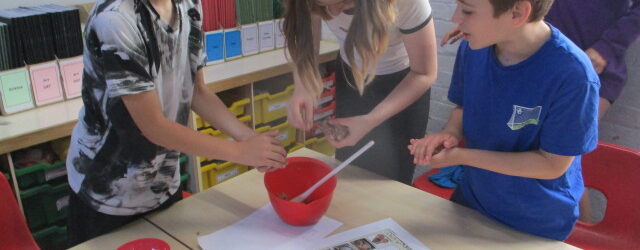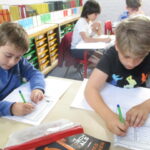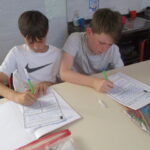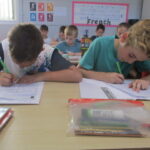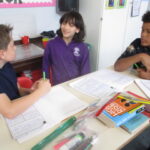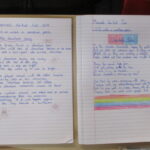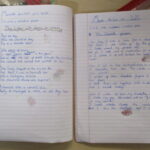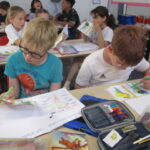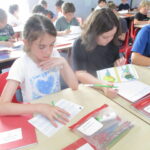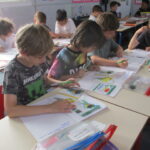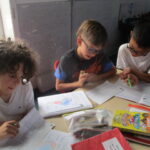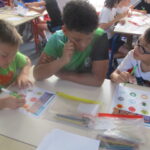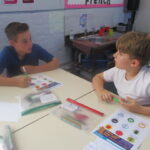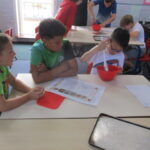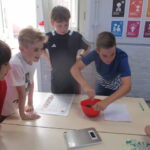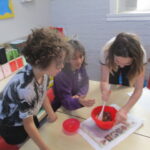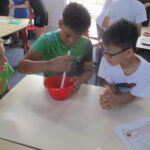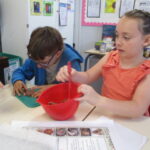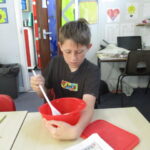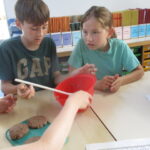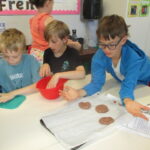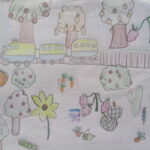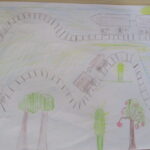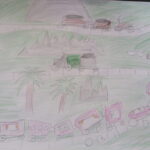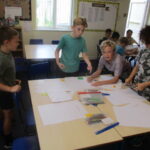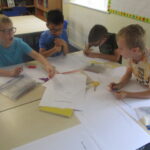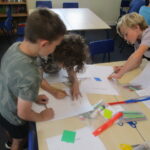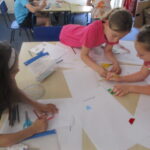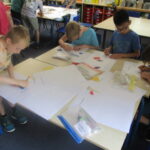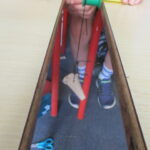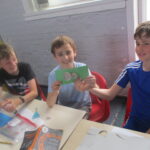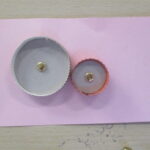This week in English, the children explored a specific type of poetry: the narrative poem. They watched a performance by Michael Rosen of his well-known poem Chocolate Cake. This poem is written for public performance rather than private reading, making it a great example for analysing performance poetry. After watching the performance, the children answered questions about the poem and explored how elements such as pitch, speed, volume and tone of voice, along with facial expressions and body language, contribute to a poem’s overall impact when performed. The children identified how Michael Rosen varied his tone to build suspense, used pitch and speed to show excitement, changed volume to emphasise key moments and added gestures and facial expressions to bring the story to life.
Inspired by the poem, the children then planned and wrote their own chocolate-themed narrative poems, using rhyme and rhythm to capture the reader’s attention.
Did you know that South America’s tropical climate provides ideal conditions for growing cocoa beans—the key ingredient in chocolate? In Geography this week, the children learned about the climate in South America. Using a climate zone map and a world map the children explored the different climate zones found across the continent. They worked carefully with their learning partners and used the maps to help them answer a series of questions, developing their geographical skills by comparing regions and recognising how climate can vary across different areas of South America.
In Maths this week, the children focused on identifying and describing the properties of 2D shapes, with particular attention to triangles and quadrilaterals. They explored the different types of triangles and quadrilaterals, describing their properties using key mathematical vocabulary. The children also took part in a MoneySense lesson exploring the links between jobs and money. They learned that some jobs pay more than others and discussed how money is just one factor to consider when choosing a job. The children understood that the choices they make about work and money can have an impact on their future lives. Working in small groups, they completed an activity where they matched nine different jobs to their estimated salaries, prompting thoughtful discussions. This learning links closely to Article 12 (the right to have a say in decisions that affect you) and Article 27 (the right to a standard of living adequate for a child’s development) of the UN Convention on the Rights of the Child, as pupils explored real-life choices and the impact of financial decision-making on their futures.
Meanwhile, in French, the children were introduced to a new unit all about pets. They learned the nouns for a variety of common animals and were introduced to the correct determiners to use with each one. To reinforce their learning, the children matched pictures with the correct French words and practised naming animals in French, developing both their vocabulary and pronunciation skills.
In Design and Technology, the children explored how to make their own beef patties. They followed step-by-step recipes, developing their understanding of food preparation, hygiene and cooking techniques. The activity allowed them to practise important life skills such as measuring ingredients, shaping patties and working safely, while also encouraging discussion around healthy choices and dietary preferences.
We have been listening to The Little Train of Caipira by Brazilian composer Heitor Villa-Lobos. The music tells the story of a train journey, and we’ve been exploring how the sounds help us imagine the movement and mood of the train. The children have noticed how the music starts gently, gets faster and louder, then slows down again – just like a train setting off, picking up speed, and coming to a stop. We talked about tempo (speed), crescendo (getting louder), and how these changes in music can show a story or feeling. We also linked this to our Art work – thinking about how smooth music might be like flowing lines, and bumpy or fast music could be like jagged or scribbled lines. Some classes even drew pictures while listening, using shapes and lines to match what they heard.
This week in Maths, Year 4 have been learning about quadrilaterals – shapes that have four sides – and discovering the different properties they can have. We’ve explored how some shapes share the same features, even though they look quite different at first. The children have looked at rectangles, squares, rhombuses, parallelograms, trapeziums, and kites. They’ve learned to spot important properties such as right angles, whether opposite angles are equal, and whether sides are the same length. For example, rectangles have four right angles and opposite sides that are equal. A square shares all of these properties, but also has all four sides the same length – which means that a square is actually a special kind of rectangle. A rhombus, on the other hand, also has all sides equal, but it doesn’t have right angles. Parallelograms have opposite sides and angles that are equal, but again, the angles are not right angles.
Over the past couple of weeks, Year 5 have been learning all about pulleys and gears as part of our work on forces and mechanisms. We started by exploring the vocabulary we need to understand how these systems work. A pulley is a simple machine made of a wheel with a rope or string running around it. It helps us lift heavy objects more easily by changing the direction of the force we use. A gear is a wheel with teeth that fits together with another gear. When one gear turns, it makes the other move too – sometimes in the opposite direction, and at a different speed. The children were surprised to discover how often we see pulleys and gears in everyday life. We talked about how pulleys are used in flagpoles, cranes, and blinds, and how gears are found in bicycles, clocks, car engines, and even electric mixers. We made our own pulley systems and gear mechanisms using simple materials. The children carefully observed how the movement changed when a second pulley was added or when different-sized gears were connected. They noticed that in a two-gear system, turning one gear clockwise made the second gear turn anti-clockwise. They also saw how a small gear connected to a larger one would turn faster, but with less force – helping them understand how gears can be used to change speed or power in real machines.

